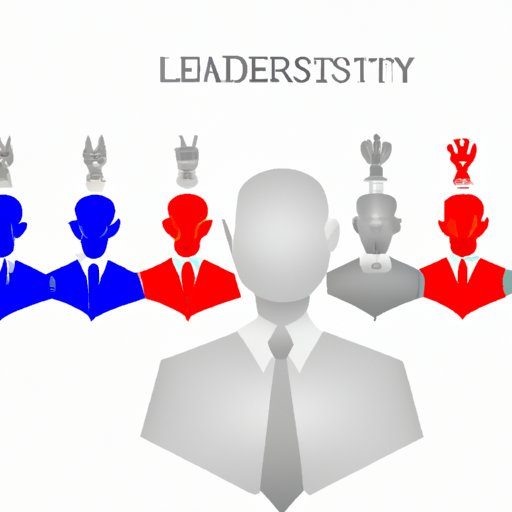Introduction
Leadership is an essential component of any successful organization or team. A leader is someone who guides and inspires others to achieve a common goal. But what makes a great leader? How can you identify what type of leader you are? In this article, we’ll explore different types of leaders and provide tips on how to assess your leadership style.
Analyzing Your Leadership Style: What Kind of Leader Are You?
To understand what kind of leader you are, it’s important to first examine your personality traits. According to a study published in the Personality and Social Psychology Bulletin, “the basic ingredients of leadership emerge from individuals’ personalities.” Our personalities shape our behavior and our ability to interact with others, which are both essential elements of leadership.
Once you have a better understanding of your own personality, you can start to explore different types of leaders. There are a few main categories of leadership styles, including autocratic, democratic, transformational, and transactional. Autocratic leaders tend to be controlling and directive, while democratic leaders are more collaborative and open to input from their team. Transformational leaders inspire and motivate their team, while transactional leaders focus on setting goals and rewarding performance.

Assessing Your Strengths and Weaknesses as a Leader
Once you have identified the type of leader you are, it’s time to assess your strengths and weaknesses as a leader. Start by reflecting on past experiences. Think about times when you led a successful project or team and times when things didn’t go as planned. What were the factors that contributed to success or failure? What did you learn from these experiences?
It’s also important to identify areas where you can improve. Consider asking trusted colleagues or mentors for feedback on your leadership style. Ask them to identify areas where you excel and areas where you could use some extra support. This will help you gain a better understanding of your strengths and weaknesses as a leader.
Identifying the Traits of an Effective Leader
No matter what type of leader you are, there are certain traits that all effective leaders share. Communication is one of the most important traits of a successful leader. Leaders need to be able to effectively communicate with their team, explain tasks, and provide feedback. They should also be able to listen to their team and take their ideas and suggestions into consideration.
Emotional intelligence is another key trait of an effective leader. Leaders need to be able to recognize and respond to the emotions of their team members. They should be able to empathize with their team and provide support when needed. Finally, great leaders need to be decisive and able to make difficult decisions quickly and effectively.
Examining Your Leadership Experiences
As you reflect on your experiences as a leader, it’s important to take stock of both your successes and failures. Think about what went well and what didn’t go so well. What were the key factors that led to success or failure? What lessons did you learn from these experiences?
It’s also helpful to ask yourself some questions. How do I handle difficult conversations or challenging situations? Am I good at delegating tasks? Do I provide enough support and resources for my team? Answering these questions will help you gain a better understanding of your leadership style and identify areas for improvement.

Developing Your Leadership Skills for the Future
The final step is to set goals for yourself and develop your leadership skills for the future. Start by setting specific, achievable goals. Break down big goals into smaller, manageable tasks that you can work on over time. It’s also important to seek feedback from others. Ask trusted colleagues or mentors for honest feedback on your leadership style and how you can improve.
Finally, don’t forget to continue learning and growing as a leader. Read books, attend workshops, and stay up to date on the latest trends in leadership. These activities will help you stay ahead of the curve and become a better leader.
Conclusion
Understanding what kind of leader you are is essential for becoming an effective leader. To identify your leadership style, start by examining your personality traits and understanding different types of leaders. Assess your strengths and weaknesses as a leader and identify the traits of an effective leader. Examine your leadership experiences and set goals for yourself to develop your leadership skills for the future.
Being an effective leader takes time, effort, and dedication. With the right mindset and the right tools, you can become a great leader and inspire those around you to reach their full potential.
(Note: Is this article not meeting your expectations? Do you have knowledge or insights to share? Unlock new opportunities and expand your reach by joining our authors team. Click Registration to join us and share your expertise with our readers.)
